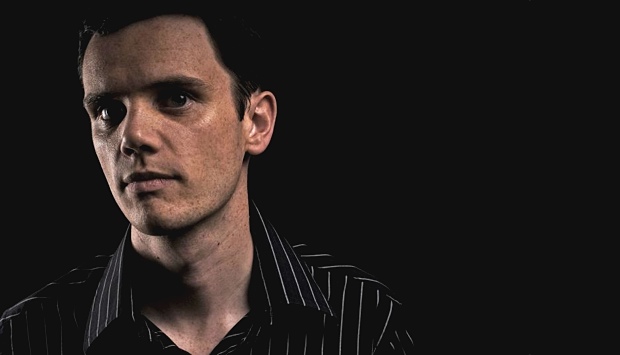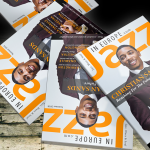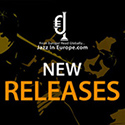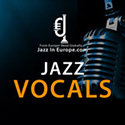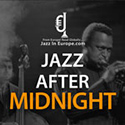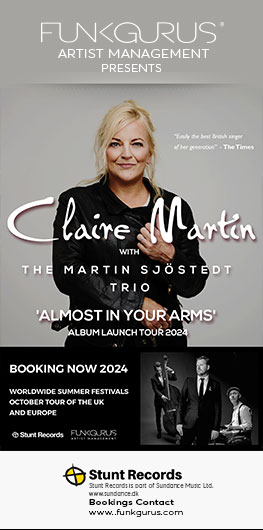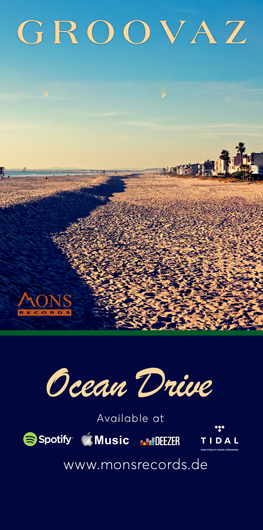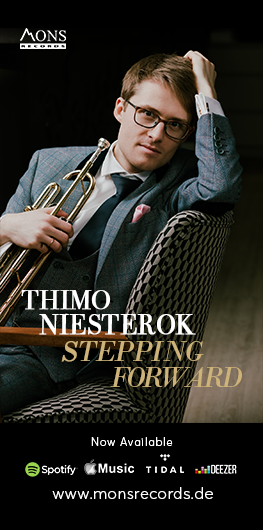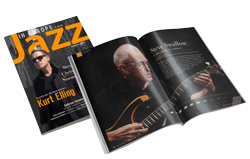Today Marks the 10 anniversary of Edition Records. Founded in 2008, Edition records is a label driven by an uncompromising love of music and with a sharply focused aim: to produce the highest quality music by the most creative musicians it can find, presented in a form which reflects that creativity and quality. With those principles resolutely held at its core it has now grown from a British label with a European sensibility to one that has a Global presence.
Since is launch, the label has built a strong catalog of high quality releases featuring many of Europe and the UK’s leading artists including Tim Garland, Jason Rebello, trumpeter Laura Jurd’s Dinosaur and the Anglo-Scandinavian trio Phronesis to name just a few. Recently we sat down with label founder Dave Stapleton to discuss the label, his vision of the recording industry moving forward and a great deal more.
Andrew Read: First of all, thanks Dave for taking the time to speak with us. This March Edition Records celebrates its 10 year, quite a milestone for any jazz record label and particularly in the current industry. Many Independent labels have come and gone, is there any one factor you can attribute the success of Edition Records to?
Dave Stapleton: Thank you, I appreciate it. When I started Edition in 2008 I never set out to build a label that would achieve an output that we have now. It was purely an channel for my own music and music of friends of mine. That was the goal. As more and more musicians asked me to release their music, the focus remained to provide an outlet rather than to build a business. In doing so, the label was always focused on music first rather than profit. I believe it was this approach in valuing music and the musicians that enabled us to attract more and more higher profile musicians. If our approach at the beginning was to find a model that was profit driven I believe we would’ve never had survived those early years. Building trust and a strong culture in the early days is vital for any business to grow and quite organically, without us really knowing it, we had developed an approach that would stay with us to today.
AR: The labels first release was an album that featured you and fellow pianist Matthew Bourne in a duo recording titled “Dismantling the Waterfall”. Prior to this you released four of your own albums on the imprint Red Eye Music that you co-founded. How did the shift from Red Eye Music to Edition Records come about?
DS: Red Eye Music was a very small label run by myself and a singer-songwriter from Cardiff. We both released our own music and supported each other in doing so. Looking back now, it played an important role for me to learn and understand the mechanics of the music industry. After 5 years however, it was clear for me to create my own identity and I needed and wanted to focus purely on Jazz. I therefore started Edition with a clearer identity but I was able to take that experience and contacts and start again.
AR: As a musician and a composer yourself, how has your creative side played a role in the vision of Edition Records?
DS: More and more over the years, I’ve allowed myself to be more creative in the business, not only musically but in design and the creation of promotional assets but also in developing strategies both long and short term. Creativity is at the centre of my life – it’s what drives me and I get as much satisfaction from a photoshoot or developing a marketing campaign as I do recording and working in a studio.
AR: Often in the music business there is a clash between the business side of the industry and the creative side. As both a musician and a label owner how have you been able to reconcile these two aspects of the industry?
DS: I agree, traditionally, the industry was seen as the ones with the money and ultimately the artist lost in the control of rights and royalties. Over the 10 years, through a lot of thinking, I knew that it didn’t have to be like that and that we could build a bridge between strategy and creativity, seeing that as one rather that 2 separate entities. Nowadays, I’m working with artists in a creative way to develop their career paths and profile. This is useful in creating promotional tools, career strategy and marketing campaigns. In turn, it becomes a greater collaborative process working together on a shared goal.
AR: Let’s move on to the current period. The recording industry as a whole is in an extreme state of flux at the moment. With physical sales declining and streaming platforms gaining market share the industry is facing a many threats, however there are also many opportunities. What are your thoughts on this and what is your vision as to where we are headed?
DS; This is a big and important question. The way I see it, change will always occur. That’s a given. It’s very easy to see change as a problem and complain about the problems that consequently occur. With the digital age, it’s brought about an unprecedented amount of change to the industry, which for some more traditional and older labels it has been hard to handle being used to a certain paradigm of sales, outlets & channels. Starting in 2008, in a sense was the perfect time. The world was in a state of economic difficulty, so expectations were low for us. Additionally, we didn’t have the baggage of past sales to base opinions on – our sales were growing, rather than in decline so we had a very different perspective. I’ve always embraced and welcomed change and I actually need it every now and then otherwise I become static and quite complacent in my thinking. Change, for me, forces a new energy and motivation.
In terms of the physical / streaming debate – streaming is bigger than any genre and there’s nothing to do but embrace it. It was clear, even before it made anyone any money, that eventually it would be a dominant player for labels to reach fans. I think starting out in the same year as Spotify did, it enabled us to embrace streaming, it didn’t take away the sales. At the end of the day, it’s about perspective. Streaming is a channel that can work alongside physical formats, it’s much more about long term revenue and building a global audience than a quick return. The tail of streaming revenue lasts over a long period of time where as the CD, 80% of the sales happen in the first 3-4 months after release. But even now, we’re seeing the impact of streaming – for instance we have a few albums that have recouped purely through streaming.
For the long term, I can see a model where streaming will become the dominant outlet supported by beautiful limited edition products that we sell direct to fans through our own channels.
AR: I agree, and that leads into my next question. In recent years Vinyl has made resurgence and for a number of years has shown substantial growth in sales. Many labels, both Majors and Independents have started to produce and or re-release music on vinyl. Although vinyl has shown substantial growth it still only makes up for a small percentage in total music sales. How does vinyl fit into the Edition Records strategy?
DS: We started producing vinyl in 2014 on a few releases at that time. This year, we’re doing most new releases on Vinyl as well as CD but only limited edition runs. The format is tricky – it’s bulky, can easily get damaged and takes a long time to make yet as a listener it’s great – it’s very physical with great warmth in the sound and becomes an wonderful listening experience.
AR: Let’s talk about specifically about streaming. There is no denying that Streaming is here to stay. Even staunch Streaming hold-outs as ECM records have now made their entire catalogue available for streaming. What are your views on streaming and the future of physical product in the jazz market?
DS: People said to me when we started, ‘Why are you starting a record label, the CD will be dead in 5 years’. Well, 5 years came around and the CD was still there and at 10 years, the CD is still here and we have Vinyl and there’s no sign of it slowing down just yet, certainly not dying. I think in Jazz, we’re lucky as fans prefer the format. At the end of the day, it’s really how fans consume music and which demographic are listening. Pop Music fans are much younger and so won’t sit down and listen to music of a complete album, it’s much more about tracks. Additionally, Pop music can handle being played through low quality phone or computer speakers as the sound is highly compressed.
With Jazz, we want that dynamic range, it’s those subtleties we want to hear. Therefore a physical format can be better suited. In a way, we’re in an golden age of the record industry where we have multiple formats working together for the different needs of the fans. People can try out music on streaming platforms, buy an album if they really like it, can listen as they travel to work or can play it on high quality speakers whilst reading liner notes / credits. So I still think both the CD and LP will be around for at least another 10 years.
As for streaming, it’s all about playlists and having access to those which have 1 million + followers. This is where labels can have the impact that self-produced / self released artists can’t. To have access to these playlists requires a good distributors and good relations so in a sense the record industry is going full circle, where again the label is becoming vital in development of artists.
AR: Phronesis bassist Jasper Høiby said recently that you “…have a wider understanding of the important part that good photos and visuals play (i.e making something look good and inviting) alongside the music…” What are your thoughts on this in an age that’s dominated by Digital? Do you believe that artists and labels should still be investing in extensive graphics and liner notes?
DS: I’ve always acted on the belief that people do judge a book by its cover. The cover is the artistic representation of the music and therefore should say something about the music and the artist. From a label perspective, especially in niche music, it’s vital to communicate who we are and what we represent, to build trust with the consumer. Jazz and classical labels are much more consumer brands than pop and rock labels. Jazz has a history of branding with Impulse, Blue Note and ECM and naturally with an interest in photography and design, I wanted Edition to have a clear identity too.
AR: From an A&R perspective, what qualities do you look for in an artist and what advice can you give an artist that is looking for a label.
DS: I read once that the New Zealand rugby team signed on character not talent. I think this is a great philosophy. As I’ve said earlier, marketing and building projects in specialist music is about collaboration, its vital that there’s trust and common goal. Talent is a given, it’s more about how artists use their talent, how they communicate nad represent themselves. Most of the signings I’ve done over the years is through personal connections and recommendations from existing artists. The best advice I could give is to create a personal contact and demonstrate long term thinking and ability to grow things together.
AR: I’ve asked this question a great deal in recent interviews and it’s provoked some rather interesting answers so far, so here I go. What are your thoughts on the state of Jazz today and where do you see the future of the genre?
DS: This is a fascinating question and the answer differs depending where you are and what context you talking in. From a European perspective, the scene is hugely exciting, the music, the festivals, the difference in culture across countries. US musicians see Europe as a place they can earn a lot of their income. From a micro-level, comparing countries and cities, there’s quite a bit of difference. The Nordic countries have a clear brand and well funded export scheme where as British Jazz creatively is at its most exciting, yet as a scene is under represented and lacks the export support that it vitally needs. There’s a long way to go but I think as the changes in the industry and streaming develops, it will provide a more global perspective rather than smaller territorial perspectives.
AR: In November last year the label announced that to celebrate the 10th anniversary you will be releasing the twelve releases in the first half of the year. While at the time of this interview the first of the series (Elliot Galvin and Snowpoet) had been released can you let our readers know what more to expect?
DS: We’ve got new albums from Norwegian pianist Eyolf Dale, and british pianist Ivo Neame, the 10th album from our first German signing Pablo Held Trio, the new album from Mercury Prize nominated band Dinosaur, Enemy, featuring Frans Petter Held, Kit Downes and James Maddren, a new orchestral album from Tim Garland and new albums from Roller Trio, Slowly Rolling Camera, Julian Argüelles’ Tetra and the 8th album from Phronesis.
AR: Apart from these releases are you planning anything else to mark the 10th anniversary?
DS: We’re looking forward to a 4 concert series at Kings Place with Eyolf Dale, Snowpoet, Dinosaur and Enemy in London, a mini festival at Pizza Express in London with Phronesis performing all 5 albums over 5 concerts and a mini festival at the North Sea Jazz Festival with Dinosaur, Jasper Hoiby’s Fellow Creatures and Slowly Rolling Camera.
AR: So to finish up, what can we expect from Edition Records in the next 10 years?
DS: We love working with artists in developing their careers so we’re very focused in building our current roster releasing more and more quality music.
AR: Thanks Dave for taking the time to speak with us. We here at Jazz In Europe wish you and Edition Records the very best for the future.
Click here for more Information on Edition Records and their coming releases.
Last modified: April 25, 2020


